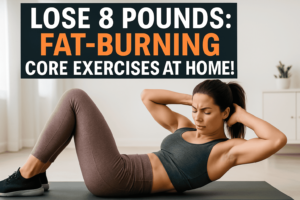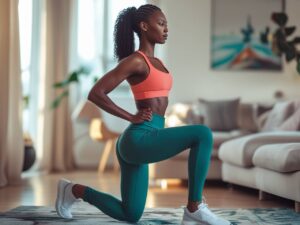Have you ever wondered how to stay fit without spending hours at the gym? Or maybe you’ve thought about starting a workout routine but feel overwhelmed by all the equipment and complicated moves. Well, guess what? You don’t need fancy machines or a personal trainer to get started. All you need is your own bodyweight—and just 10 minutes a day!
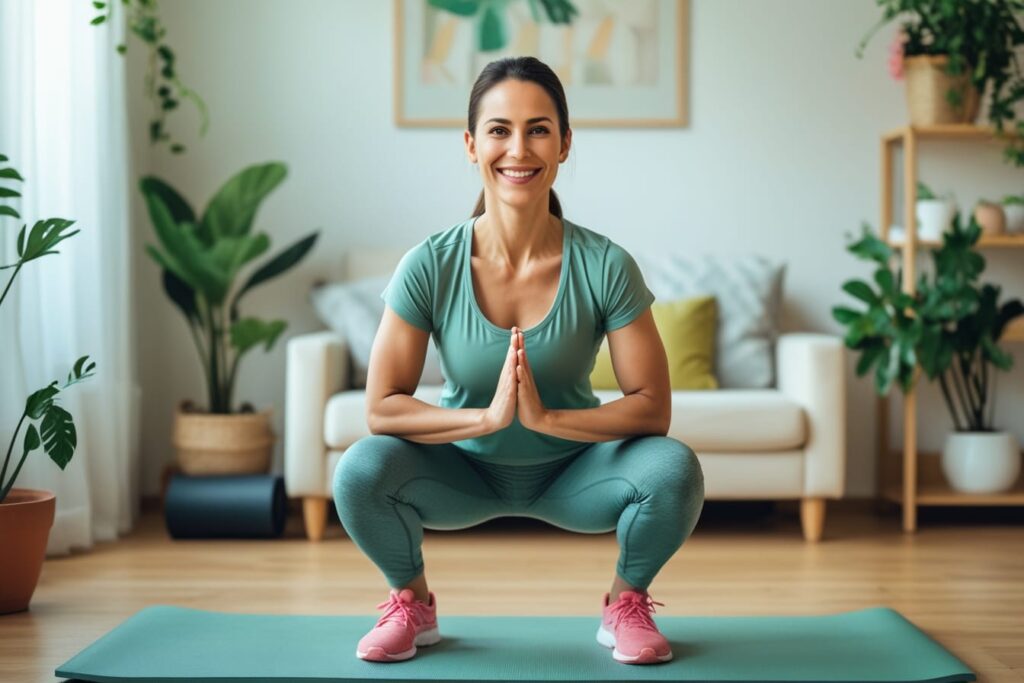
In this article, we’ll guide you through a simple yet effective 10-minute bodyweight workout designed specifically for beginners. Plus, we’ll share tips, highlight common mistakes, and recommend some amazing tools (like resistance bands and yoga mats) that can take your workouts to the next level. Let’s dive in!
i. Why Bodyweight Workouts Are Perfect for You
Bodyweight workouts are one of the most accessible forms of exercise out there. Whether you’re a busy mom juggling work and family life or someone who simply prefers working out at home, this type of training offers flexibility and convenience.
1.1 The Benefits of Bodyweight Training
Bodyweight exercises are not only easy to perform but also incredibly versatile. They allow you to build strength, improve flexibility, and boost cardiovascular health—all without needing any special equipment. Plus, they’re perfect for those short on time because you can complete an effective workout in as little as 10 minutes.
Here’s why bodyweight workouts stand out:
- No Equipment Needed: Everything you need is already attached to you—your arms, legs, and core!
- Time-Efficient: Short workouts like this 10-minute routine can deliver big results.
- Versatile: You can modify exercises to suit your fitness level.
- Cost-Effective: No expensive gym memberships or gear required.
For example, when I first started my fitness journey, I didn’t have access to a gym or fancy equipment. But guess what? With consistency and dedication, bodyweight exercises helped me transform my body and mindset. And now, I’m here to help you do the same!
1.2 Who Can Benefit from This Workout?
This workout is ideal for:
- Women aged 20-40 looking to improve their physique.
- Beginners who want an easy entry point into fitness.
- Busy individuals who struggle to find time for long workouts.
If you’re someone who has been hesitant to start exercising because of time constraints or lack of resources, this workout is tailor-made for you. Trust me—I’ve been there too. When I first started my fitness journey, I didn’t have access to a gym or fancy equipment. But guess what? With consistency and dedication, bodyweight exercises helped me transform my body and mindset
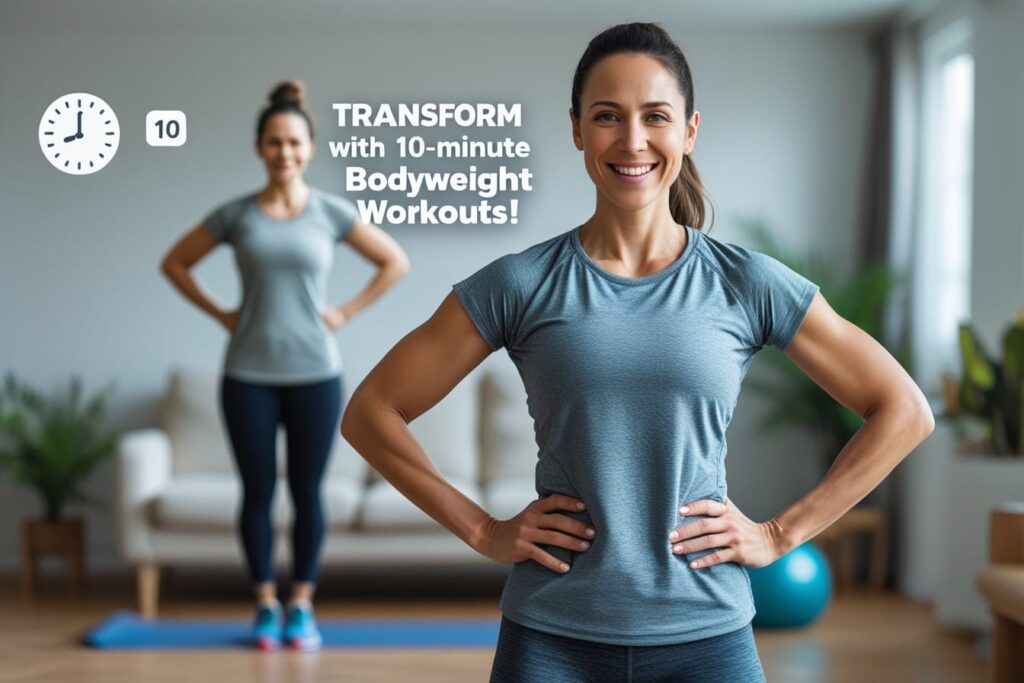
2. Getting Started: What You Need to Know
Before jumping into the workout, let’s cover a few basics to ensure you’re set up for success.
2.1 Setting Up Your Space
Find a quiet corner in your house where you have enough room to move freely. A small area (about 6×6 feet) is usually sufficient. Clear away any obstacles, such as furniture or rugs, that might trip you up during your workout. If possible, lay down a yoga mat for added comfort and stability. Speaking of which, if you’re looking for a high-quality yoga mat, check out this one , which provides excellent grip and cushioning.
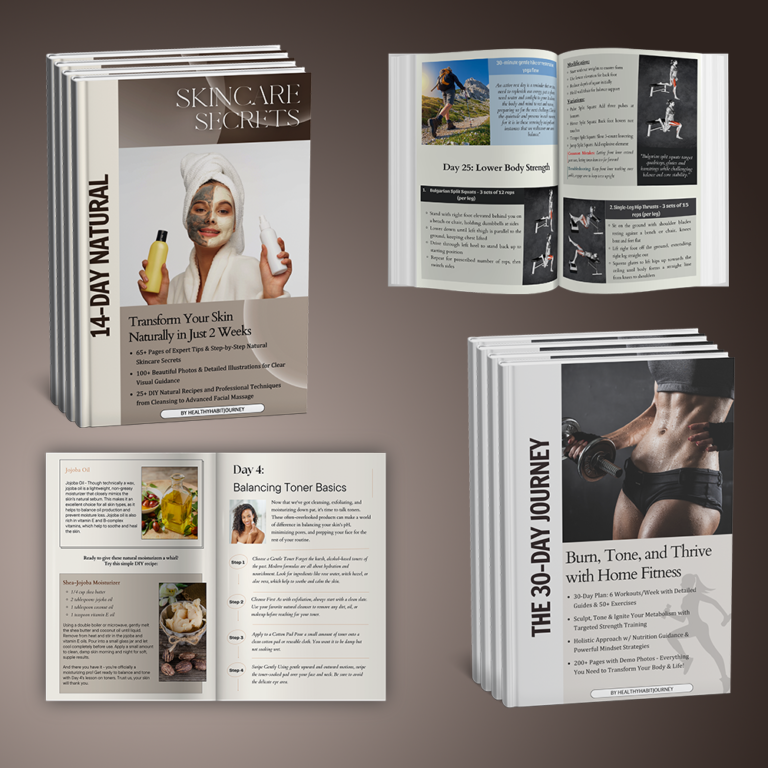
Beauty & Fitness Guides: Your Complete Wellness Ebooks
2.2 Warming Up Properly
A proper warm-up prevents injuries and prepares your muscles for action. Spend 2-3 minutes doing dynamic stretches like arm circles, leg swings, or light jogging in place. For example, try this quick warm-up sequence:
- Arm Circles: 30 seconds forward, 30 seconds backward.
- Leg Swings: 30 seconds per leg.
- High Knees: 30 seconds.
- Torso Twists: 30 seconds.
Remember, warming up isn’t optional—it’s essential. Skipping this step could lead to muscle strains or other injuries.
3. The 10-Minute Beginner-Friendly Bodyweight Workout
Now comes the fun part—the actual workout! Perform each exercise for 40 seconds , followed by 20 seconds of rest . Complete two rounds total.
Exercise 1: Squats – Build Strength in Your Legs
Squats are a fantastic way to strengthen your lower body while improving mobility. Here’s how to perform them correctly:
- Stand with feet shoulder-width apart.
- Lower your hips back as if sitting in a chair.
- Keep your chest up and knees aligned with your toes.
- Push through your heels to return to standing.
Common Mistake: Leaning too far forward.
Tip: Imagine holding a ball between your thighs to keep alignment.
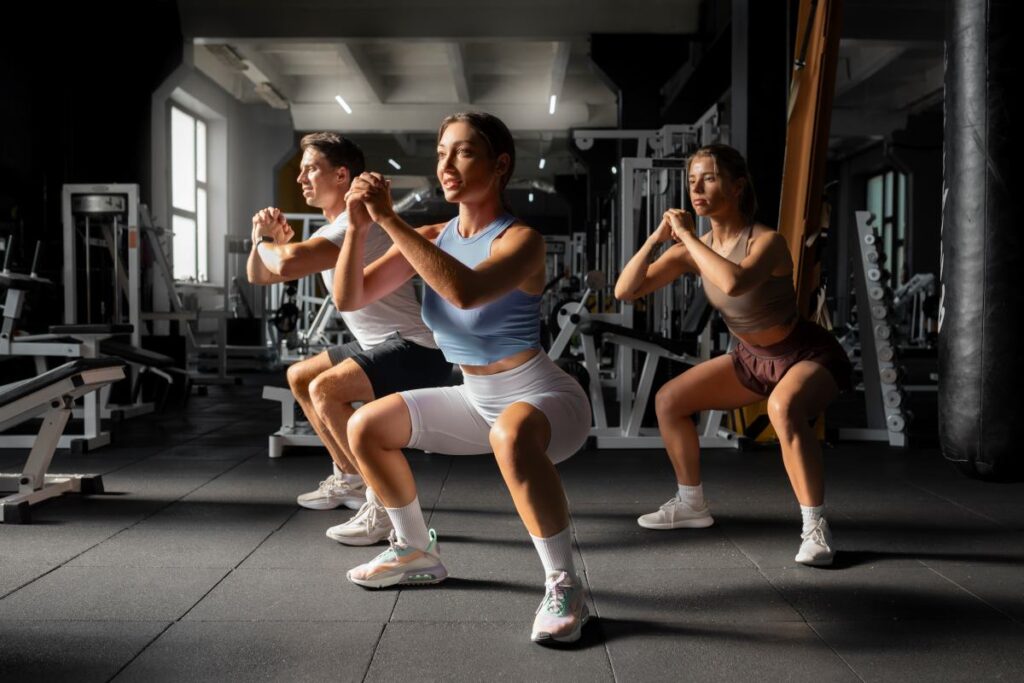
Exercise 2: Push-Ups – Strengthen Your Upper Body
Push-ups target your chest, shoulders, and triceps. Follow these steps:
- Start in a plank position with hands under shoulders.
- Lower your chest toward the ground while keeping your body straight.
- Push back up explosively.
Modification: Drop to your knees if needed.
Exercise 3: Plank – Engage Your Core
The plank is one of the best exercises for building core strength. Here’s how to do it:
- Start in a forearm plank position.
- Keep your body in a straight line from head to heels.
- Engage your abs and glutes to maintain stability.
Common Mistake: Sagging hips.
Tip: Look slightly ahead, not down, to maintain posture.
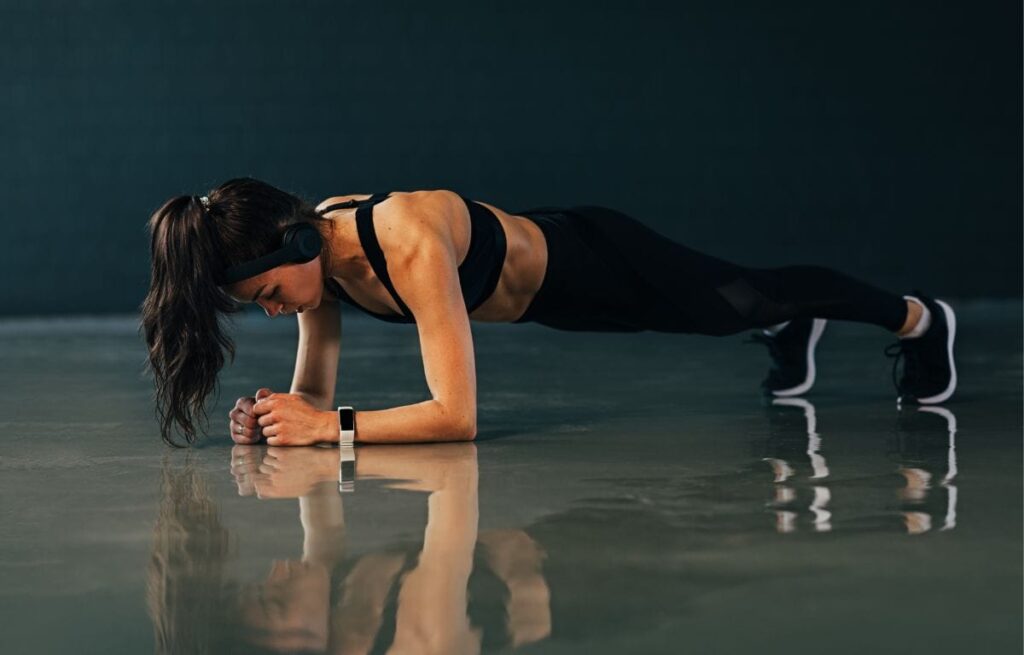
Exercise 4: Glute Bridges – Activate Your Lower Body
Glute bridges are great for targeting your glutes and hamstrings. Here’s how to perform them:
- Lie on your back with knees bent and feet flat on the floor.
- Lift your hips toward the ceiling while squeezing your glutes.
- Lower your hips back down slowly.
Tip: Focus on squeezing your glutes at the top of the movement for maximum activation.
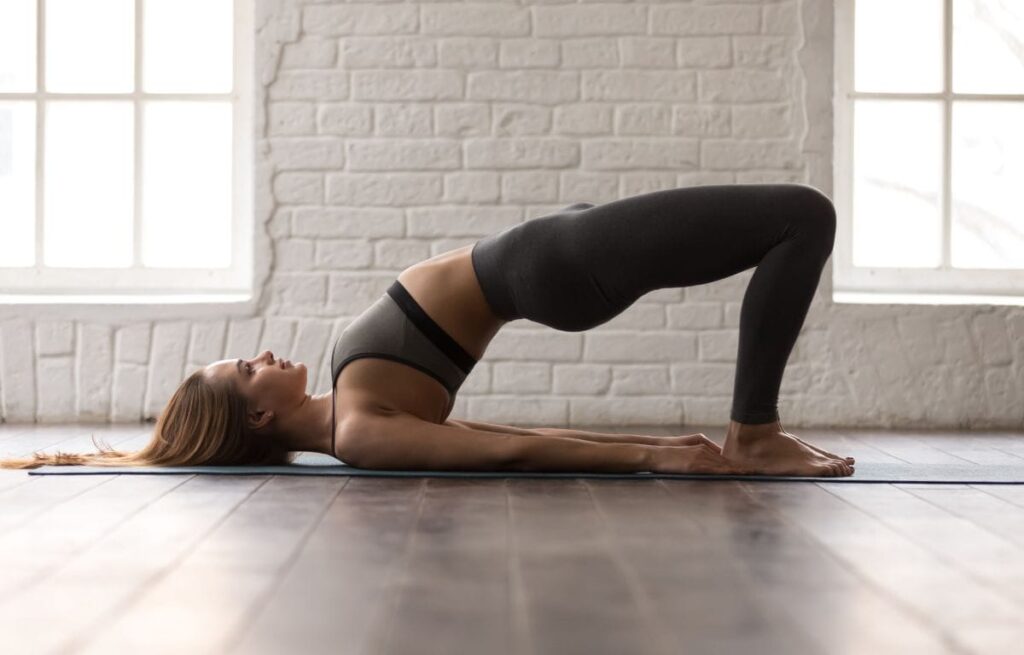
Exercise 5: Jumping Jacks – Get Your Heart Pumping
Jumping jacks are a classic cardio exercise that gets your heart rate up quickly. Here’s how to do them:
- Stand with feet together and arms at your sides.
- Jump while spreading your legs wide and raising your arms overhead.
- Jump back to the starting position.
Modification: Step side-to-side instead of jumping if you prefer low-impact options.
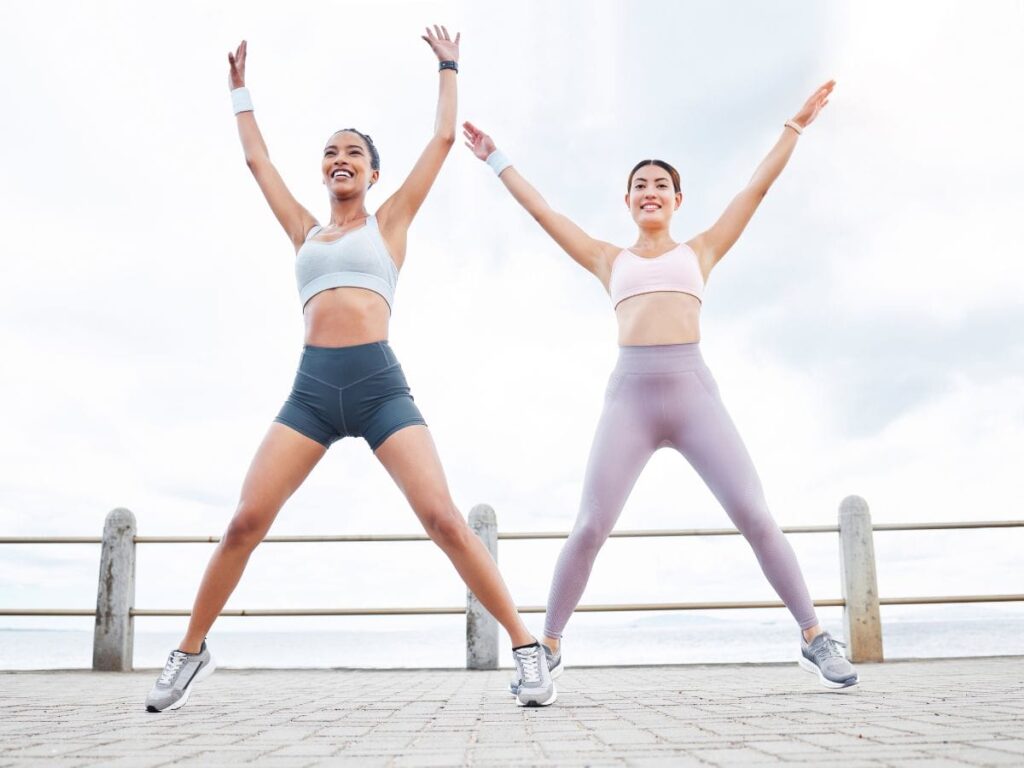
4. Common Mistakes and How to Avoid Them
Even the simplest workouts can go wrong if you’re not careful. Here are three common pitfalls:
Mistake #1: Poor Form
Poor form can lead to injury. Always prioritize quality over quantity. For instance, when performing squats, avoid letting your knees cave inward. Instead, focus on keeping them aligned with your toes.
Mistake #2: Skipping the Warm-Up
Skipping the warm-up increases your risk of strains and sprains. Take those extra few minutes to prepare your body for the workout ahead.
Mistake #3: Overdoing It Too Soon
Start slow and gradually increase intensity to avoid burnout. Remember, consistency is key!

Beauty & Fitness Guides: Your Complete Wellness Ebooks
5. Tips for Maximizing Your Results
Tip #1: Focus on Consistency, Not Perfection
Showing up every day—even for just 10 minutes—is key to seeing progress. Don’t worry about mastering every move right away; improvement will come with practice.
Tip #2: Track Your Progress
Use a journal or app to log your workouts and improvements. Tracking your progress helps you stay motivated and see how far you’ve come.
Tip #3: Mix It Up Occasionally
Add variety to prevent boredom and challenge different muscle groups. For example, swap out squats for lunges or push-ups for tricep dips.
Tip #4: Focus on Proper Breathing Techniques
Breathing is often overlooked in bodyweight workouts, but it plays a crucial role in maximizing your performance and preventing fatigue. Here’s how to breathe correctly during different exercises:
- For Strength Exercises (e.g., Squats, Push-Ups): Inhale deeply before starting the movement, and exhale as you exert force (e.g., pushing up during a push-up or standing up during a squat). This helps stabilize your core and maintain proper form.
- For Cardio Exercises (e.g., Jumping Jacks): Breathe rhythmically, inhaling through your nose and exhaling through your mouth. This ensures a steady flow of oxygen to your muscles, keeping you energized.
- For Core Exercises (e.g., Plank): Focus on slow, controlled breathing. Avoid holding your breath, as this can cause unnecessary tension in your body.
Pro Tip: If you find yourself getting out of breath quickly, slow down your pace and focus on deep, diaphragmatic breathing. Over time, your lung capacity will improve, and you’ll be able to sustain longer workouts.
Tip #5: Incorporate Mindfulness into Your Routine
Mindfulness isn’t just for meditation—it can also enhance your workouts. By staying present and focusing on each movement, you’ll not only improve your form but also reduce stress and increase enjoyment. Here’s how to practice mindfulness during your workout:
- Set an Intention: Before starting your workout, take a moment to set a goal. For example, “I’m doing this to feel stronger” or “I’m here to relieve stress.”
- Engage Your Senses: Pay attention to how your body feels during each exercise. Notice the stretch in your muscles, the rhythm of your breathing, and the sensation of your feet on the ground.
Stay Positive: Instead of focusing on how tired you feel, celebrate small victories. For example, “I nailed that plank!” or “I completed all five exercises without stopping.”
By incorporating mindfulness, you’ll transform your workout from a chore into a meaningful part of your day.
FAQ Section: Answering Your Questions About Bodyweight Workouts
Q1: Can I lose weight with bodyweight exercises?
Absolutely! Bodyweight exercises are an effective way to burn calories and build lean muscle, both of which contribute to weight loss. Pair your workouts with a balanced diet, and you’ll start seeing results in no time.
Q2: How often should I do these workouts?
For beginners, aim to do this 10-minute workout 3-4 times per week. As you progress, you can increase the frequency or duration to challenge your body further.
Q3: Do I need any equipment for bodyweight workouts?
No, you don’t need equipment to get started. However, tools like resistance bands or a yoga mat can enhance your experience and provide additional benefits.
Conclusion: Start Your Fitness Journey Today!
Congratulations—you’ve reached the end of our beginner-friendly 10-minute bodyweight workout guide! By now, you should feel confident about incorporating these exercises into your daily routine. Remember, consistency is key. Even 10 minutes a day can lead to significant improvements in your strength, flexibility, and overall well-being.

